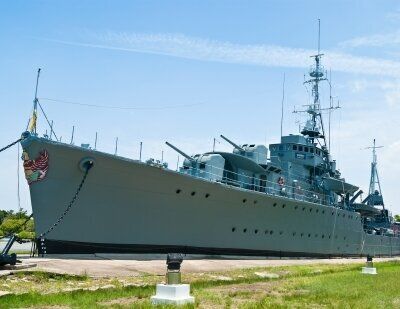
*Kate Epstein [2004] did an MPhil International Relations and is author of the recently published Torpedo: Inventing the Military-Industrial Complex in the United States and Great Britain. She is currently Assistant Professor of History Education at Rutgers University - Camden. Picture credit: http://www.freedigditalphotos.net and photoexplorer.
In his 1961 Farewell Address, US President Dwight Eisenhower famously warned his fellow citizens about the "military-industrial complex". In the years since September 11, 2001, a soaring Pentagon budget, long wars in Iraq and Afghanistan, scandals involving defence contractors and leaks about government surveillance - to name just a few - have reminded many of Eisenhower's warning.
Most historians agree with Eisenhower that the military-industrial complex began in the mid-twentieth century. And they are correct - if we define the military-industrial complex in terms of its scale and permanence. But if we instead consider certain of its essential dynamics, its origins are to be found in the decades before World War I. What gave rise to the military-industrial complex was not a single war like World War II or the Cold War, but the collision of geopolitical tension, globalisation and industrialisation.
In the late nineteenth century, what many scholars call the Second Industrial Revolution was transforming societies and economies around the world. The steel, electrical and chemical industries exploded, and Germany, Japan, and the United States emerged as competitors to Britain's longtime industrial hegemony. These increasingly industrialised economies became ever more closely linked, as new communications technologies and financial instruments drew nations together into a globalising world economy. Even as they grew more economically dependent on each other, however, nations engaged in fierce geopolitical competition, both on the European continent and over more distant imperial holdings.
Torpedoes
Torpedoes were at the centre of all three trends. They were invented in 1866 by Robert Whitehead, a British expatriate in the Austro-Hungarian empire who sold to nations around the world. Like steamships, torpedoes were metal and ran on engines, but torpedoes could be produced in much larger numbers because they were relatively inexpensive and small compared to ships. Despite their size, torpedoes threatened to undermine traditional tactics and strategies based on fighting battles and commanding the seas with big, expensive ships carrying heavy guns. Torpedoes were also at the cutting edge of the technologically possible. By 1910, they could reach ranges of six miles and speeds of 50 miles per hour - faster than a Model-T Ford.
Procuring advanced industrial technology like torpedoes drove governments and the private sector into a new kind of relationship. Previously, governments had either built weapons for themselves or bought them as finished products from the private sector. But torpedoes were so expensive and sophisticated that neither governments nor private firms had the capacity to development from start to finish. Instead, governments and contractors began to collaborate on research and development (R&D).
That collaboration raised difficult questions about intellectual property rights. With both the public and private sectors participating in the work of invention, ownership of intellectual property (IP) was disputable. The US and British governments - both nominally liberal - aggressively asserted their claims against private intellectual property to avoid paying royalties and to restrict the sale of torpedoes abroad. When they realised that their IP claims were weak, thanks to errors they had made in drafting contracts, the governments sought more advantageous terrain, reclassifying disputes as being about national-security information rather than intellectual property. Both governments relied on anti-espionage legislation - the 1889 Official Secrets Act in Britain and the 1911 National Defence Secrets Act in the United States - to classify scientific and technological information as secret for reasons of national security.
Thus, the origins of the military-industrial complex and the national-security state lie not in the mid-twentieth century but in the decades before World War I. Eisenhower, for all his alarm, may have been too sanguine. A complex brought into being by a particular war like World War II or the Cold War might be expected to end when the war ended. But a complex rooted in world-historical forces like globalisation, geopolitics and industrialisation, transcending any single war, would not end when a war ended. It would endure, and nations at peace would become ever more difficult to distinguish from nations at war.
